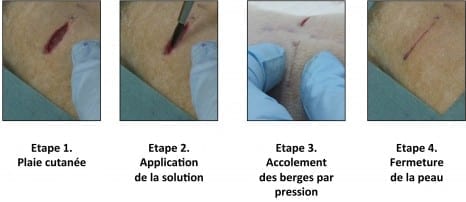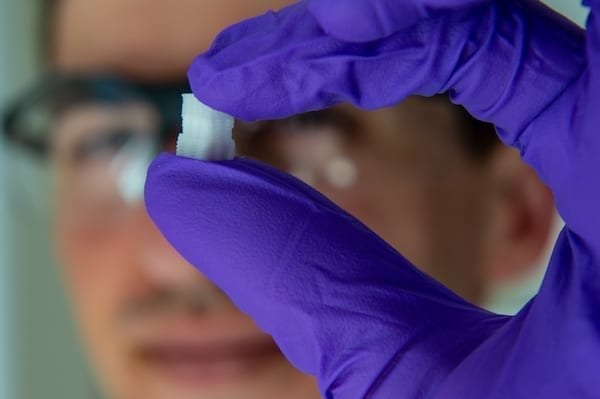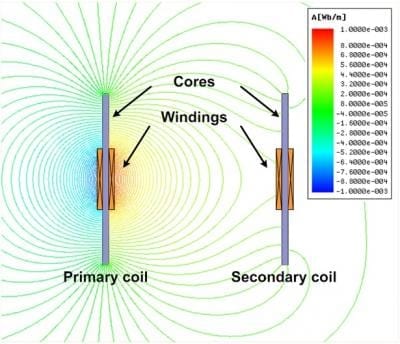
Innovative strategy to facilitate organ repair
A significant breakthrough could revolutionize surgical practice and regenerative medicine. A team led by Ludwik Leibler from the Laboratoire Matière Molle et Chimie (CNRS/ESPCI Paris Tech) and Didier Letourneur from the Laboratoire Recherche Vasculaire Translationnelle (INSERM/Universités Paris Diderot and Paris 13), has just demonstrated that the principle of adhesion by aqueous solutions of nanoparticles can be used in vivo to repair soft-tissue organs and tissues. This easy-to-use gluing method has been tested on rats. When applied to skin, it closes deep wounds in a few seconds and provides a esthetic, high quality healing. It has also been shown to successfully repair organs that are difficult to suture, such as the liver. Finally, this solution has made it possible to attach a medical device to a beating heart, demonstrating the method’s potential for delivering drugs and strengthening tissues. This work has just been published on the website of the journal Angewandte Chemie.
In an issue of Nature published in December last year, a team led by Ludwik Leibler 1 presented a novel concept for gluing gels and biological tissues using nanoparticles 2. The principle is simple: nanoparticles contained in a solution spread out on surfaces to be glued bind to the gel’s (or tissue’s) molecular network. This phenomenon is called adsorption. At the same time the gel (or tissue) binds the particles together. Accordingly, myriad connections form between the two surfaces. This adhesion process, which involves no chemical reaction, only takes a few seconds. In their latest, newly published study, the researchers used experiments performed on rats to show that this method, applied in vivo , has the potential to revolutionize clinical practice.
In a first experiment, the researchers compared two methods for skin closure in a deep wound: traditional sutures, and the application of the aqueous nanoparticle solution with a brush. The latter is easy to use and closes skin rapidly until it heals completely, without inflammation or necrosis. The resulting scar is almost invisible.
In a second experiment, still on rats, the researchers applied this solution to soft-tissue organs such as the liver, lungs or spleen that are difficult to suture because they tear when the needle passes through them. At present, no glue is sufficiently strong as well as harmless for the organism. Confronted with a deep gash in the liver with severe bleeding, the researchers closed the wound by spreading the aqueous nanoparticle solution and pressing the two edges of the wound toget her. The bleeding stopped. To repair a sectioned liver lobe, the researchers also used nanoparticles: they glued a film coated with nanoparticles onto the wound, and stopped the bleeding. In both situations, organ function was unaffected and the animals survived.
“Gluing a film to stop leakage” is only one example of the possibilities opened up by adhesion brought by nanoparticles. In an entirely different field, the researchers have succeeded in using anoparticles to attach a biodegradable membrane used for cardiac cell therapy, and to achieve this despite the substantial mechanical constraints due to its beating. They thus showed that it would be possible to attach various medical devices to organs and tissues for therapeutic, repair or mechanical strengthening purposes.
This adhesion method is exceptional because of its potential spectrum of clinical applications. It is simple, easy to use and the nanoparticles employed (silica, iron oxides) can be metabolized by the organism. It can easily be integrated into ongoing research on healing and tissue regeneration and contribute to the development of regenerative medicine.
The Latest on: Revolutionize surgical practice and regenerative medicine
[google_news title=”” keyword=”Revolutionize surgical practice and regenerative medicine” num_posts=”10″ blurb_length=”0″ show_thumb=”left”]
via Google News
The Latest on: Revolutionize surgical practice and regenerative medicine
- Regenerative medicine could help patients find relief from chronic nerve and joint painon May 7, 2024 at 7:53 pm
If you've struggled with issues like joint pain, osteoarthritis or neuropathy, you may have been told the only way to find relief is through drugs or surgery -- or that nothing at all will help. The ...
- Can AI Be Applied To Revolutionize Healthcare And Medical Outcomes?on May 6, 2024 at 4:48 pm
The event was a discussion of AI in medicine held on the campus of Harvard University. During the discussion, a senior faculty leader at Harvard Medical School commented to the effect that research ...
- Regenerative Medicine and the Developing Worldon May 4, 2024 at 5:00 pm
[1] As the field of regenerative medicine regroups ... the Departments of Public Health Sciences and Surgery, and the McLaughlin Centre for Molecular Medicine. Disclosure: The authors have ...
- New institute to leverage experts to advance regenerative medicineon May 3, 2024 at 4:30 am
The lnstitute of Regenerative Medicine will provide a unique resource and collection ... These organizations include UT Health San Antonio, the U.S. Army Institute of Surgical Research at Joint Base ...
- Regenerative medicine articles from across Nature Portfolioon May 2, 2024 at 5:00 pm
Regenerative medicine is the branch of medicine that develops methods to regrow, repair or replace damaged or diseased cells, organs or tissues. Regenerative medicine includes the generation and ...
- Wearable technology assesses surgeons’ posture during surgeryon April 18, 2024 at 5:00 pm
Researchers at Baylor College of Medicine in collaboration with the ... the interactions with the equipment they use in surgical practice, especially in procedures in which there is constant ...
- Kansas Regenerative Medicine Center celebrates 10 years of transformative healthcareon April 17, 2024 at 5:00 pm
Kansas Regenerative Medicine Center, Manhattan, Kansas, celebrated its 10th anniversary on March 21. Over the past decade, Kansas Regenerative Medicine Center has been at the forefront of ...
- REGENERATIVE MEDICINEon April 9, 2024 at 3:13 pm
Swedish authorities said Monday an Italian surgeon once hailed for pioneering windpipe surgery but later jailed for unethical experimental treatments can serve his sentence in Spain where he lives.
- Nano-robots revolutionize medicineon April 1, 2024 at 5:00 pm
Robots are becoming smaller and are changing the medical field in new ways. They’re called microbots or nano-robots, and they’re so small that thousands of them could fit in a single pill that ...
- Medicine: Inept Surgeryon March 22, 2024 at 6:25 am
that at least half his current practice”consists of attempts to correct the bad results of surgery … bydoctors inadequately trained in this field.” Physician Hawley offered this explanation ...
via Bing News










